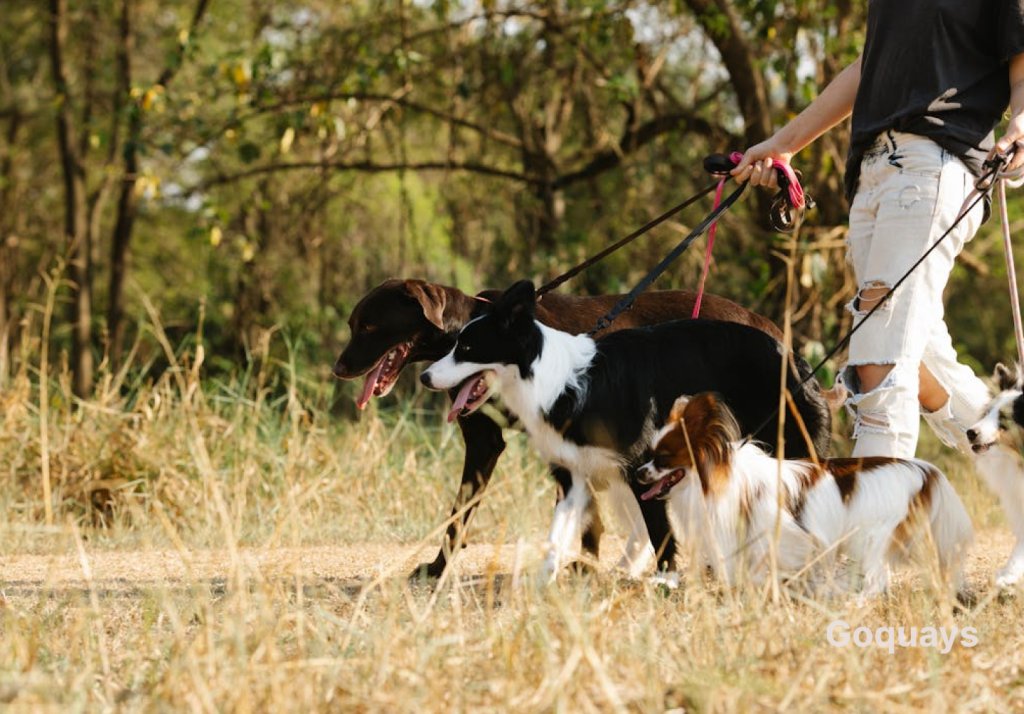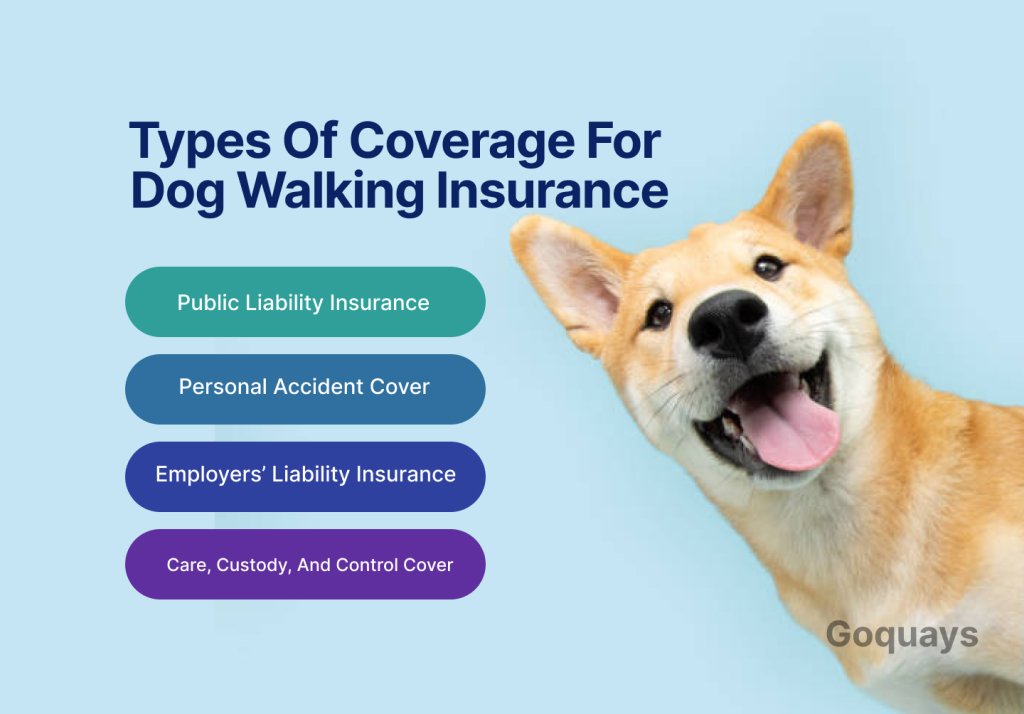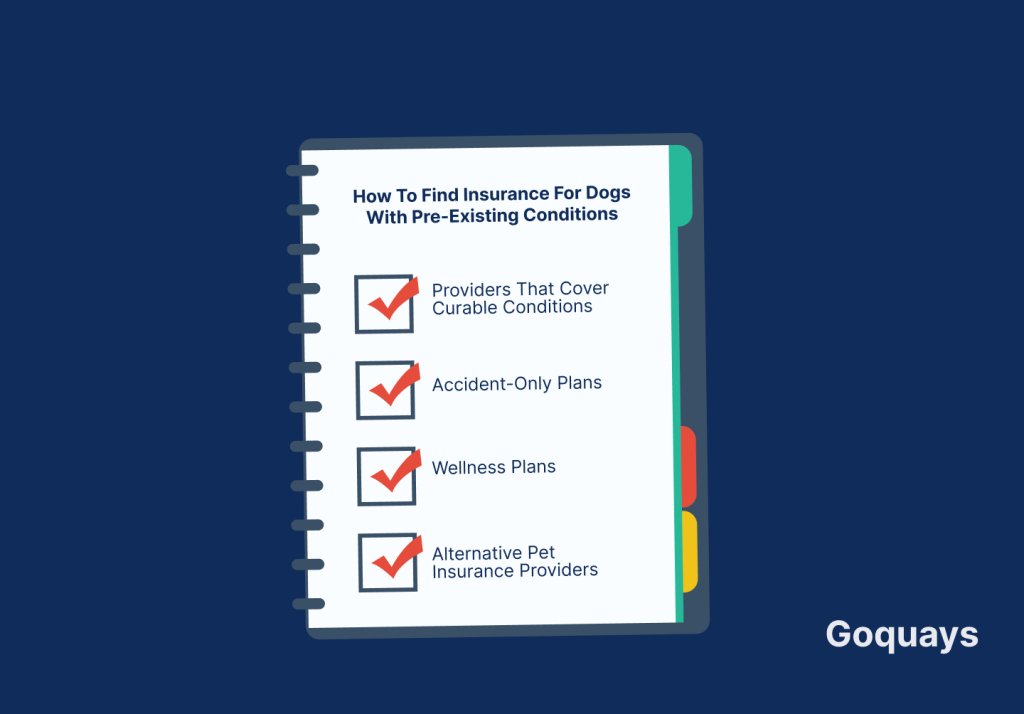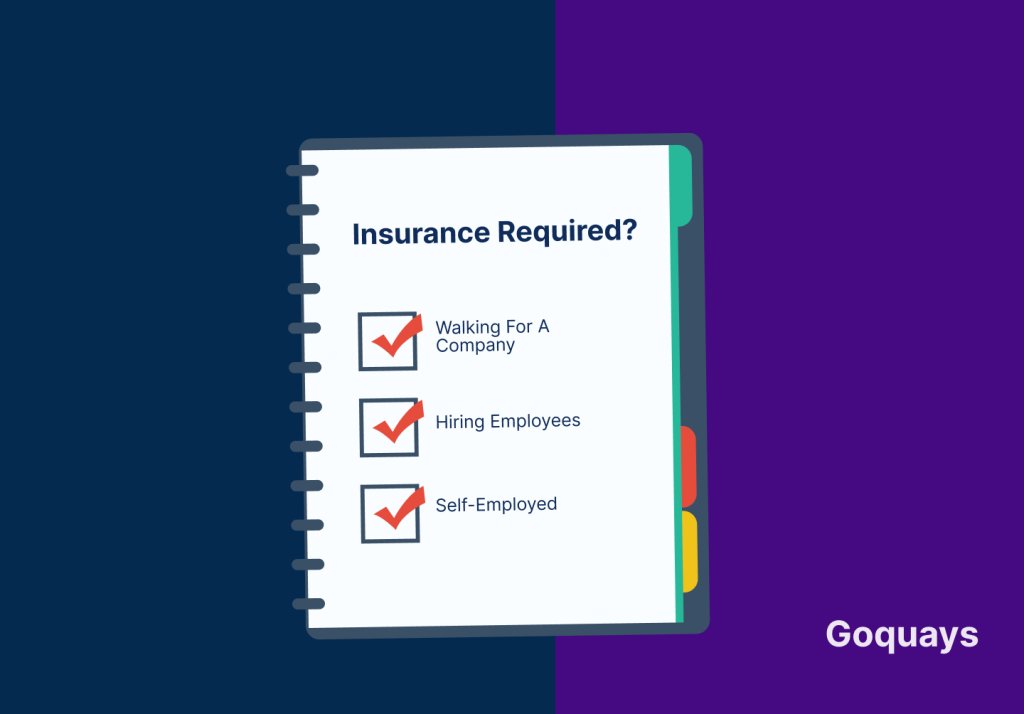If you’re a professional dog walker or thinking about starting a dog walking business, dog walking insurance is something you can’t afford to overlook. No matter how careful and experienced you are, accidents can happen. A dog might slip out of its collar and run into traffic, get into a fight with another dog, or even bite someone unexpectedly. In these situations, you could be held financially and legally responsible. That’s where the right insurance comes in—it protects you from costly claims, covers medical or legal expenses, and gives both you and your clients peace of mind.
Beyond financial protection, having dog walking insurance also boosts your credibility as a professional. Many pet owners won’t hire a walker who isn’t insured, and some parks or local councils even require proof of coverage. Whether you’re walking a single dog or managing a growing pet care business, the right insurance ensures you can focus on what you do best—keeping your furry clients happy and safe.
In this guide, we’ll break down everything you need to know about dog walking insurance—what it covers, why it’s essential, and how to choose the best policy for your business. Let’s dive in!
What is dog walking insurance?

If you’re a professional dog walker or thinking about becoming one, you might have heard about dog walking insurance. But what exactly is it? Simply put, dog walking insurance is a type of business insurance designed to protect you from financial loss if something goes wrong while you’re out with your furry clients.
Imagine this: you’re walking a group of dogs in the park, and one of them suddenly bolts, knocking over a cyclist. Or maybe a client’s dog slips out of its collar and runs into traffic. Worst-case scenario? A dog in your care gets injured or lost, and the owner expects you to cover the costs.
Dog walking insurance helps cover situations like these so you’re not stuck paying out of pocket. It can protect you from claims related to injuries, property damage, or legal disputes. In short, it’s your financial safety net when working with dogs
Do you need dog walking insurance?

Yes you do. Even if you’re the most careful dog walker in the world, accidents can happen. A dog under your care might get loose, bite someone, or cause damage to property. Without insurance, you could end up facing a hefty bill or even a lawsuit. Many pet owners will only hire insured dog walkers because it shows that you take your job seriously. If you’re working for a company or an agency, they might require you to have insurance before you start taking on clients.
Plus, if you’re planning to turn dog walking into a business, having insurance makes you look more professional and trustworthy. It’s a small price to pay for peace of mind.
Types of coverage for dog walking insurance

Dog walking insurance isn’t just about protecting your business—it’s about giving you peace of mind while you care for your furry clients. A good policy covers a range of risks, ensuring that if something goes wrong, you’re not left paying out of pocket. Here are the key areas typically included in a dog walking insurance policy:
- Public Liability Insurance
This is one of the most important types of coverage. It protects you if a dog in your care injures someone or damages property. Imagine a dog jumps up on a passerby, knocking them over, or chews up an expensive handbag at the park. Public liability insurance can cover the legal costs and compensation in these situations.
- Personal Accident Cover
Walking dogs can be physically demanding, and accidents happen. Whether you trip over a leash, get bitten by a nervous dog, or slip on an icy sidewalk, personal accident cover helps with medical expenses, rehabilitation costs, and even lost income if you can’t work.
- Employers’ Liability Insurance
If you hire staff, even on a part-time basis, you’re legally required to have employers’ liability insurance. If an employee gets injured while walking dogs for your business, this coverage helps with medical costs and legal claims, protecting both you and your workers.
- Care, Custody, and Control Cover
What if a dog in your care gets injured, lost, or stolen? Vet bills can be expensive, and owners expect their pets to be safe with you. This coverage helps pay for medical treatment, recovery efforts, or compensation if a dog goes missing under your watch.
Every policy is different, so always read the fine print and make sure you have the right level of protection for your business.
What is usually not included in dog walking insurance?

While dog walking insurance covers a lot, it’s not a free pass for everything. Some common exclusions include:
- Pre-existing medical conditions – If a dog in your care already has a health issue and something happens related to that condition, your insurance may not cover it.
- Negligence or reckless behavior – If you ignore safety guidelines, leave a dog unattended, or fail to secure a leash properly, your claim could be denied.
- Walking more dogs than allowed – Some policies have a limit on how many dogs you can walk at once. If you exceed that number and something goes wrong, you might not be covered.
- Intentional harm – Any mistreatment or harm caused to a dog by the walker will not be covered. Insurance is there to protect against accidents, not negligence or abuse.
It’s always a good idea to carefully review what’s included and what’s not in your policy before purchasing.
Why do you need insurance for your dog walking business?

Running a dog walking business might seem simple—you walk dogs, get paid, repeat. But in reality, it comes with risks that could cost you a fortune if you’re not covered.
For one, you’re dealing with live animals, and no matter how well-trained they are, dogs can be unpredictable. They can get injured, cause accidents, or even run away. If something happens while they’re in your care, the financial responsibility falls on you.
Beyond that, having insurance makes your business look more professional. Many pet owners won’t trust an uninsured walker with their beloved pets. If you ever want to expand your business, work with higher-paying clients, or even hire staff, having proper insurance is a must.
What are some risks of dog walking?

Walking dogs sounds like a dream job—you get fresh air, exercise, and plenty of furry companionship. But like any job, it comes with risks. Even the most experienced dog walkers can face unexpected challenges. Here are some of the biggest risks you should be prepared for.
- Dog Fights: Even friendly dogs can have bad days. A playful interaction can quickly turn into a scuffle, leaving one or more dogs injured. You or a bystander could also get hurt trying to separate them. Understanding dog body language and avoiding aggressive-prone pairings can help prevent fights.
- Runaway Dogs: A leash could snap, or a dog might wriggle out of its collar and bolt. If a dog runs off and gets lost or injured, you could be held responsible. Using secure harnesses, double-checking gear, and sticking to fenced areas can help keep your dogs safe.
- Bites and Injuries: Even well-trained dogs can bite if they’re startled or feel threatened. If a dog in your care bites someone, you could face medical bills and legal costs. Training in dog behavior and first aid can help prevent and manage these situations.
- Traffic Accidents: A dog might lunge unexpectedly, pulling you into the street or running into traffic. Keeping dogs on short, controlled leashes near roads and choosing quieter walking routes can reduce the risk of accidents.
5. Extreme Weather: Hot summers can cause heatstroke, while freezing temperatures can lead to frostbite. Adjusting your schedule, providing water, and monitoring dogs for distress can prevent weather-related health issues.
Is business insurance a legal requirement for dog walkers?

In most places, you don’t legally need business insurance to work as a dog walker. However, that doesn’t mean you should go without it. If you’re running a professional dog walking business, having insurance can protect you from costly accidents and legal claims. Many pet owners prefer to hire insured dog walkers because it reassures them that their pets are in safe hands. Some clients might even require proof of insurance before trusting you with their dogs.
While general dog walking insurance isn’t mandatory, there are situations where coverage is legally required. If you hire employees, you must have employers’ liability insurance. This protects you if a staff member gets injured or falls ill while working for your business. Even if you only have one part-time employee, failing to have this coverage could result in heavy fines.
It’s also important to check local laws and regulations. Some councils or regions may have specific requirements for dog walking businesses. In some areas, you may need a permit or proof of public liability insurance to operate legally. Staying informed about these regulations ensures you don’t accidentally break any rules.
Even if it’s not legally required, getting business insurance is a smart move. Accidents can happen anytime—a dog might run into traffic, bite someone, or cause property damage. Without insurance, you could be responsible for vet bills, medical expenses, or legal fees, which can add up quickly. Having the right coverage protects your business and gives both you and your clients peace of mind. Whether you’re just starting or already have a list of loyal clients, investing in insurance is a responsible way to safeguard your business and reputation.
How much does dog walking insurance cost?
The cost of dog walking insurance varies based on several factors. The type and level of coverage you choose play a big role. If you opt for higher coverage limits, you’ll pay more in premiums, but you’ll also have better financial protection in case of an accident.
Another key factor is how many dogs you walk at once. Walking one or two dogs carries less risk than handling a whole pack, so insurers may charge higher premiums if you regularly walk multiple dogs. Your location also affects your costs. Insurance rates can differ depending on local laws, claim trends, and even the general cost of living in your area.
Your claims history is another thing insurers look at. If you’ve made claims in the past, your premiums may be higher since you’re seen as a bigger risk. However, maintaining a clean record with no claims can help keep your costs down.
On average, dog walking insurance can cost anywhere from £80 to £400 per year, depending on coverage. Basic policies with lower coverage limits will be on the cheaper end, while comprehensive plans that include things like public liability, personal accident cover, and care, custody, and control insurance will cost more.
It’s important to compare different insurance providers to find a policy that fits your needs and budget. Some insurers offer discounts if you bundle multiple types of coverage or pay annually instead of monthly. Investing in the right policy ensures you’re financially protected while running your business with confidence.
Is there a limit to how many dogs you can walk at a time?

Most insurance policies set a limit on how many dogs you can walk at once—usually between four and six. This limit helps reduce the risk of accidents and ensures you can keep all the dogs under control. Managing multiple dogs on different leashes can be challenging, especially in busy areas with distractions like cyclists, other dogs, and traffic.
Walking too many dogs at once increases the chances of leash tangles, dog fights, or even a dog slipping out of its collar and running off. Some councils also have legal restrictions on how many dogs a single person can walk at a time. If you exceed these limits, your insurance may not cover you in the event of an incident. It’s always best to check your insurance policy and any local regulations before deciding how many dogs to walk together.
What other laws do you need to know about as a dog walker?
Aside from insurance, there are several important laws every dog walker should know. Local leash laws vary, but in most areas, dogs must be on a lead in public places unless in a designated off-lead area. Failing to follow leash laws could result in fines or liability if a dog causes an accident.
Pet waste regulations are also important. Many councils have strict rules about cleaning up after dogs, and ignoring them can lead to penalties. Carrying waste bags and properly disposing of dog mess helps you stay compliant and keeps public spaces clean.
Some areas require permits for professional dog walkers, especially in parks or nature reserves. There may also be breed-specific legislation in place, restricting certain breeds from being walked without a muzzle or specific training. Checking local regulations ensures you operate legally and maintain a good reputation as a responsible dog walker.
Benefits of dog walking insurance
If you’re serious about your dog walking business, insurance isn’t just a “nice-to-have” — it’s essential. Imagine you’re out walking a client’s dog, and something unexpected happens. Without insurance, you could be facing huge costs or even legal trouble.
Dog walking insurance offers peace of mind. It protects you from those unpredictable moments that can turn a simple walk into a stressful situation.
- Financial Protection: Accidents happen, even when you’re careful. A dog could escape, get injured, or cause damage. Insurance covers those costs, so you’re not paying out of pocket.
- Client Trust and Credibility: Clients feel safer when they know you’re insured. It shows you’re professional, responsible, and serious about their pet’s well-being. In fact, some clients may only hire insured walkers.
- Legal Coverage: If a dog in your care bites someone or causes property damage, you could face legal action. Insurance can cover legal fees, saving you from costly lawsuits.
- Injury Protection: Dog walking is active work. If you slip, trip, or get injured by a dog, personal accident cover can provide financial support while you recover.
- Protection for Your Business: If you employ staff, employers’ liability insurance is a legal requirement. It protects you if an employee gets injured or falls ill while working for you.
In short, insurance isn’t just about ticking a box — it’s about protecting yourself, your business, and the dogs you care for. With the right cover, you can focus on what you do best: giving your furry clients the best walks possible.
How to choose the right insurance provider

Choosing the right insurance can feel overwhelming, but it’s easier when you know what to look for. The key is finding a policy that protects you without overpaying for things you don’t need.
- Look for Comprehensive Coverage: Your insurance should cover key risks like public liability, personal injury, and care for pets. Don’t assume every policy includes these — always check the details.
- Check the Coverage Limits: Some insurers may offer low-cost policies with limited protection. For example, a policy might only cover damages up to £1,000 — which may not be enough if serious injury occurs. Aim for higher coverage limits to stay protected.
- Understand the Exclusions: Insurance often comes with exclusions. Some policies won’t cover certain breeds, dog fights, or incidents that occur outside designated walking zones. Knowing what’s not covered helps you avoid surprises.
- Consider Reputation and Reviews: Read reviews from other dog walkers. A provider may look great on paper, but real customer experiences reveal the full picture. Pay attention to how insurers handle claims — fast and fair service is essential.
- Look for Flexible Policies: Your business may grow over time. Find an insurer that offers flexible policies so you can add new staff, increase coverage, or expand services without hassle.
- Ask About Discounts: Some insurers offer discounts if you hold certifications, use safety equipment, or maintain a clean claims record. Ask about potential savings when comparing policies.
Tips for reducing your insurance costs
Dog walking insurance is essential, but that doesn’t mean you have to pay more than necessary. There are smart ways to lower your costs while still getting the coverage you need. Here’s how you can keep your premiums affordable.
- Bundle Your Policies for Discounts
Many insurers offer multiple types of coverage, including public liability, personal accident, and equipment insurance. Instead of buying each separately, look for bundle options. A combined policy is often cheaper than purchasing individual covers. Plus, bundling makes managing your insurance simpler. - Prove You Have Safety Measures in Place
Insurance companies love low-risk clients. If you show that you follow strong safety procedures, insurers may offer better rates. Using secure leashes, GPS trackers, and first aid kits demonstrates responsibility. Completing pet first aid or dog behavior courses also proves you take your job seriously. - Keep a Clean Claims Record
The fewer claims you make, the lower your premiums stay. If you’re constantly filing claims for minor incidents, your insurer may consider you high risk. Prevent accidents by staying alert on walks, using safe walking routes, and carefully introducing new dogs into your group. - Increase Your Excess
Excess is the amount you pay before insurance kicks in. Choosing a higher excess often reduces your monthly premium. However, make sure it’s an amount you can afford to pay if you ever need to make a claim.
5. Shop Around and Compare Quotes
Never settle for the first quote you get. Different insurers offer different pricing and coverage. Use comparison websites and read reviews from other dog walkers to find the best deal. Don’t just focus on price—make sure the policy actually covers what you need.
How to make a claim dog walking insurance

Even with the best safety measures, accidents happen. When they do, knowing how to make an insurance claim can save you time and stress. Here’s a simple guide to help you through the process.
Step 1: Report the Incident Immediately
As soon as something goes wrong, notify your insurer. Many companies have time limits for making claims, so don’t wait too long. Whether it’s an injury, lost dog, or property damage, report it as soon as possible.
Step 2: Gather Evidence
Insurance companies need proof of what happened. Take photos of the accident scene, any injuries, or damaged property. If possible, get a statement from a witness. For dog-related incidents, a vet report may also be required.
Step 3: Fill Out the Claim Form
Your insurer will provide a claim form. Be honest and detailed when filling it out. Missing information can delay the process, so double-check that you’ve included everything required.
Step 4: Submit Supporting Documents
Depending on the claim, you might need:
- Vet bills
- Medical reports
- Repair invoices (for property damage)
- Police reports (if applicable)
Keep copies of everything you submit so you have a record in case there are follow-up questions.
Step 5: Wait for Approval and Payout
Once your insurer has all the information, they’ll review the claim. Some insurers process simple claims in a few days, while complex cases may take longer. If they need more details, respond quickly to avoid delays.
Step 6: Learn from the Incident
If the claim was preventable, think about what you can do differently next time. Was it a faulty leash? A misjudged dog pairing? Learning from mistakes can help reduce future risks and keep your insurance costs down.
Common mistakes to avoid when buying dog walking insurance

Choosing the wrong insurance can cost you time, money, and unnecessary stress. Avoid these common mistakes when picking a policy.
- Not Reading the Exclusions: Many policies have exclusions that aren’t obvious at first glance. Some don’t cover certain dog breeds, off-leash walking, or incidents outside specific locations. Always read the small print so you’re not caught off guard.
- Underinsuring Your Business Choosing the cheapest policy might save you money upfront, but low coverage limits can be a problem. If an accident leads to a £10,000 legal claim but your policy only covers £5,000, you’ll have to pay the difference. Make sure your limits are high enough to fully protect you.
- Assuming Home Insurance Covers Dog Walking Activities: Some dog walkers think their home insurance includes business liability—it usually doesn’t. If an incident happens while you’re working, your home insurance likely won’t pay out. Always get specialist dog walking insurance to stay fully covered.
- Ignoring Customer Reviews: Not all insurers provide good customer service. Some may be slow to process claims or make it difficult to get paid. Before choosing an insurer, check online reviews and see what other dog walkers say about their experience.
5. Not Keeping Proof of Safety Measures: If you ever need to make a claim, insurers will ask for proof that you followed safety procedures. Keep records of vet visits, training certifications, and any safety equipment you use. This can help speed up claim approval.
Case studies & real-life examples
Dog walking insurance isn’t just a “just in case” expense. It actively protects dog walkers when things go wrong. Here are real-life examples of how insurance has helped in difficult situations.
Case Study 1: The Runaway Dog
Ben, an experienced dog walker, was taking five dogs on their usual route. Suddenly, one of them slipped out of its harness and bolted. Despite searching for hours, the dog was nowhere to be found. The owner was devastated and held Ben responsible.
Luckily, Ben had care, custody, and control cover as part of his insurance. The policy covered the cost of search efforts, including flyers, social media ads, and a pet detective service. The dog was found three days later, and the owner was relieved. Without insurance, Ben would have faced thousands in legal and recovery costs.
Case Study 2: The Unexpected Bite
James was walking a Labrador when it suddenly lunged and bit a passerby. The person needed stitches and threatened legal action. James had public liability insurance, which covered the victim’s medical bills and legal fees. Without it, James would have had to pay everything himself.
Case Study 3: The Injury That Stopped Work
Samantha had been a dog walker for years, but one day, she tripped over a leash and broke her ankle. She couldn’t work for two months, meaning no income. Thankfully, her personal accident insurance covered her lost earnings while she recovered. Without it, she would have struggled financially.
Final thoughts
Dog walking might seem like a simple job, but it comes with responsibilities and risks. Having the right insurance protects you, the dogs in your care, and your business. Whether you’re just starting or already running a successful dog walking business, investing in insurance gives you peace of mind and shows your clients that you take your work seriously.
So before you hit the trails with your furry clients, make sure you’re covered—you never know when you’ll need it!





